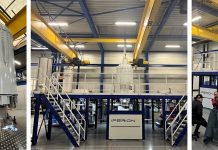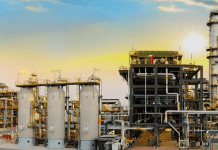Although today’s car fuels are very low in sulphur, a certain amount of sulphur dioxide remains present in the exhaust gases. Together with the condense water, it forms sulphurous or sulphuric acid that deposits in the exhaust system. Ferritic stainless steels resist these acids very well, and have good heat resistance, according to an article by Bruno Schwarz and Frank Tessin published in “Fenster”, the customer magazine of ESAB Germany (English translation in “Svetsaren”). Ferritic stainless steels are increasingly preferred over austenitic stainless steels for exhaust systems. Ferritic stainless steels are sensitive to the heat cycle generated by welding. Grain growth and hardening due to martensite formation can reduce the toughness of the steel and increase the risk of cracking in the heat-affected zone of the weld. This can be avoided by using special filler materials and by the correct welding procedure. Ferritic stainless steels can be welded with either austenitic or ferritic filler materials. The austenitic filler metal composition 18 8Mn (1.4370/ER 307) is commonly applied. However, this type of welding consumable is sensitive to corrosion in sulphur containing media and can therefore only be used for exhaust systems when extremely low sulphur content fuels are used. ESAB offers a comprehensive range of filler materials for the welding of ferritic stainless steels. The new Arcaloy metal-cored wires for MAG welding provide a productive option for specific exhaust applications.






